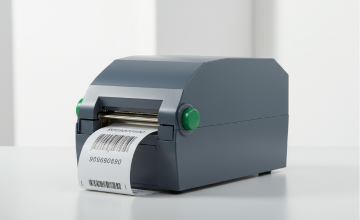Thermal Printing in 2025: What’s Changed and What’s Next

Thermal Printing in 2025: What’s Changed and What’s Next
Thermal printing technology has come a long way in recent years. Once seen as a straightforward way to produce barcodes and shipping labels, it’s now a key part of connected, automated operations across industries such as pharmaceuticals, logistics, and manufacturing.
1. Higher Print Resolution and Precision
Today’s thermal printers are achieving new levels of clarity. High-resolution print engines such as Zebra’s ZE511 now offer up to 600 dpi output -delivering crisp, legible barcodes and small text ideal for pharmaceutical, electronics, and medical applications where precision is critical.
These advances not only improve scan ability but also ensure compliance with increasingly strict labelling standards, such as GS1 and FDA requirements.
2. Smarter, More Connected Devices
Connectivity is now at the heart of thermal printing. Modern printers integrate seamlessly into IoT systems, allowing teams to monitor performance, manage print jobs remotely, and receive maintenance alerts before downtime occurs.
Cloud-based print management solutions, like Zebra Print DNA and BarTender Cloud, make it easier than ever to control fleets of printers across multiple sites - ensuring consistent label quality and reducing waste.
3. The Rise of RFID and Smart Labelling
RFID technology continues to gain traction, particularly in logistics, aerospace, and healthcare, where real-time tracking and product authentication are vital.
Many new thermal printers now offer RFID encoding modules, enabling businesses to print and program smart labels in a single pass. This not only streamlines production but also supports digital traceability and compliance goals.
4. Sustainability and Material Innovation
Sustainability remains a key focus for 2025. The push for eco-friendly materials has led to major advances in linerless labels, biodegradable ribbons, and recyclable adhesives.
By reducing liner waste and switching to durable, sustainable options, businesses can lower their environmental footprint without sacrificing print quality or durability.
5. Future Outlook: Automation and Intelligence
The future of thermal printing lies in automation and predictive intelligence. Expect to see increased integration between printers, barcode verifiers, and vision systems - all working together to validate labels in real time.
For manufacturers and pharmaceutical companies, these technologies reduce human error, improve compliance, and keep production lines moving efficiently.
Ready to Upgrade Your Printing Process?
Whether you’re upgrading old printers or exploring automation, BHT Services offers a complete range of thermal printers, labels, ribbons, and verification systems to keep your operation future-ready.











